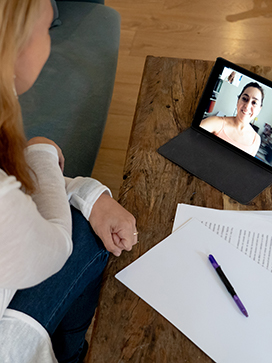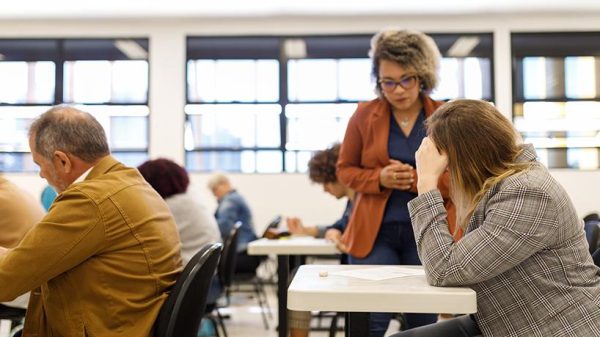Instructional coaches are a trusted source of support for teachers and leaders, and that support is needed now more than ever. Every educator is navigating uncharted territory due to the Coronavirus, with varying levels of readiness for distance learning and a heap of other questions about how to meet students’ multi-faceted needs.
Coaches are poised to help, but have questions of their own, including how to connect meaningfully with educators in the absence of face-to-face communication. What roles should coaches be playing in this sudden transition to a new learning environment? How can they stay connected when their normal routines are disrupted? And how can they look out for their own needs while supporting other educators?
Learning Forward senior consultants Eric Brooks, Heather Clifton, and Sharron Helmke recently shared some timely advice for coaches. Here are some of the big take-aways. We discussed these and other strategies during a Twitter chat on March 31. You can view the recap of the chat here.
Be clear about your role
If you work in a well-established coaching culture, teachers are likely to trust you and turn to you during this time – and that’s a good thing. Brooks says he and his coaching colleagues in the Yuma Union High School District in Arizona are receiving more questions than ever from teachers, and they are having frequent virtual meetings to stay connected.
If you work in a well-established coaching culture, teachers are likely to trust you and turn to you during this time – and that’s a good thing. Share on XBut Helmke warns that it can be tempting in a time like this to answer teachers’ pleas by giving them specific instructions of what to do rather than proving the kind of questioning and discussion that should be coaches’ focus. “Teachers are feeling overwhelmed, and that can get passed on to coaches,” she says. “You feel pressure to do the work for the teacher. But your job is to support their thinking.” She warns that coaches can get burned out and become ineffective if they aren’t clear about what kind of support they are providing.
That doesn’t mean coaches can’t provide instrumental support. Brooks encourages coaches to model online instruction for teachers and create some sample lessons that leverage useful features of the online platform. “When you give examples, it lets people know, ‘I’m looking out for you,’” he advises. Furthermore, he says, coaches are well positioned to curate resources and share good models, because they have the experience and the time in their schedules to separate the best from the rest.
The key is to be intentional about your role and your boundaries. Helmke recommends taking time before every coaching conversation or team meeting to remind yourself of “what’s my work and what’s your work.”
Accommodate varying needs
Although the transition to distance learning was sudden for almost all schools, teachers and leaders have varying degrees of readiness for it – and so do coaches. That means different people will need different kinds of support.
First, recognize what support you need and reach out for it. If you need to learn how to facilitate a webinar or navigate a video chat, start there. Contact your school or district technology leader or the classroom instructional technology teacher.
Then assess what your teachers and leaders need and chunk your support as needed. Helmke is seeing two general categories of teachers right now – those who had already moved to a blended model but are now shifting to fully online, and those who had resisted moving to blended learning or had little opportunity to do so. “They need to be coached very differently,” she advises. For teachers who have little experience with online learning, Helmke recommends coaches facilitate a Zoom meeting or Google Hangout and replicate the structure of an in-person PLC to cover the basics and share resources.
Brooks, whose district trained all teachers to use an online teaching platform last summer, has had good luck grouping teachers according to experience and comfort level. Each group worked on skills appropriate to their level, but the common thread was that all groups applied the skills to their own lesson plans, both for deep learning of the skills and for ready implementation.
Stay connected with your principal
It’s important for school leaders and coaches to be sending consistent messages to teachers, especially during a time that can be confusing or even chaotic. In many districts, principals and other leaders are in close contact with coaches about how they can support teachers in a way that is aligned across classes and schools. But if you haven’t heard from your principal, don’t be shy about reaching out to her or him. Helmke advises saying something like, “I know you’re very busy, but I really need 20 minutes of your time so we have a consistent plan.”
It’s important for school leaders and coaches to be sending consistent messages to teachers, especially during a time that can be confusing or even chaotic. Share on XKeep the focus on equity
Ensuring that all students have equitable access to technology and instruction must be at the top of every educator’s list. No matter what the socioeconomic background of your community, students have variable access. Some homes may have no technology access at all. Others may have access only through a parent’s mobile phone. Even economically secure families may not have a printer, or may have four kids sharing time on one computer.
Ensuring that all students have equitable access to technology and instruction must be at the top of every educator’s list. Share on XCoaches can play a crucial role in pushing teachers to think about these diverse realities and the equity implications of their instructional plans. You can also help administrators think through equity across classes and teachers so all students are getting the same level of instruction. You can pose important questions like: are we still trying to teach to grade-level growth targets, or are we instead using this time to personalize to students’ individual needs? You can then be a conduit for relaying this information from administrators to teachers.
Find your district’s tech expertise
Some districts and schools have a strong technology leader who has already stepped up to ensure everyone is prepared for distance learning. But even in districts that don’t, Brooks says, there are people who are sophisticated users of educational technology who have a lot to share. Leverage the people in your district who are already teaching with Google Classroom or Canvas or whatever platform you’re using, he advises.
He points out that younger teachers who are digital natives are more likely to have learned with blended models themselves and therefore may be more prepared than veterans. “This is an opportunity for them to shine,” he says, adding “It’s just about figuring out how they can share what they know.”
Connect with your networks
Reach out to your networks, both in and outside of your district – for example, through Learning Forward and other professional associations – for instrumental and emotional support. No matter how busy we are right now, we all feel isolated and overwhelmed. “We need to be paying attention to the emotional needs of everyone navigating this uncharted territory, including coaches, so they can feel good about their purpose,” says Clifton. Social connection is the most important part of emotional support.
As Chief Academic Officer, Brooks has a Google Hangout every two or three days with his district’s coaches and instructional leaders to stay connected to their needs and questions, and those they are hearing from teachers – and just to stay in touch. He recommends that coaches in districts that are smaller or less organized for this transition reach out to friends and colleagues in nearby districts or organizations.
Look for windows of opportunity
“The bright spot of this crisis is that people will get really innovative,” says Clifton. This could mean finding opportunities to learn science around the topic of the Coronavirus or free up teachers and families of young children to learn in experiential ways “that don’t require sitting down with paper and pencil.” She is encouraged by many states’ decisions to cancel annual testing and sees this as an opportunity for educators to focus on learning and on measuring whether kids are successful as learners in more creative ways. Coaches should feel able to reach out to teachers and ask what they need right now, even if it’s not tied to the target standards that schools would normally be focused on.
Be patient with teachers – and yourself
Helmke says it’s more important than ever to remember that a coach’s job is to meet teachers where they are. It’s not helpful to point out that they could have taken advantage of online teaching modules last summer, for example. “We have to put our own frustration in check and say, ‘ok, this is where this teacher is, and this is how I can help her move forward right now.’
It’s also vital to listen patiently and supportively to teachers’ fears and frustrations, she says. “Teachers are going to vent at coaches, and if they aren’t heard, they won’t be fully invested in the coaching conversation that happens after.” Make time to listen, she advises, and if you don’t have time for that emotional support to be part of the conversation, reschedule the conversation for a time when you do. But set a clear boundary for the venting part of the conversation by pointing out that there are things we can control and things we can’t. “Help the teacher focus on what she can control, and that will help bracket the stress so that it doesn’t overwhelm every aspect of her life,” she says.
Similarly, Clifton counsels patience with the leaders you coach, especially new leaders. Focus on providing resources about dealing with psychological stress, she says, and advise them to have confidence in their instincts and follow their core values in this uncertain time for which none of us have a roadmap.
While you are doing this work, Helmke urges self-compassion above all else. “Don’t expect too much of yourself as you try to manage your own children, your work, and everything else on your plate.” You may not get as much done as usual, and that’s ok. Take the time to do some mindfulness exercises or yoga. Be with your family. And accept that you can only do as much as you can do. No one is an expert at managing the extreme situation we find ourselves in, so it’s more important than ever that we take deep breaths and support each other as we figure it out together.
Eric Brooks is chief academic officer in Yuma Union (Arizona) High School District and a senior consultant with Learning Forward. Heather Clifton is a senior consultant with Learning Forward and an executive leadership coach. Sharron Helmke is a Gestalt Awareness Coach and a senior consultant for Learning Forward. Suzanne Bouffard is vice president, communications at Learning Forward.









